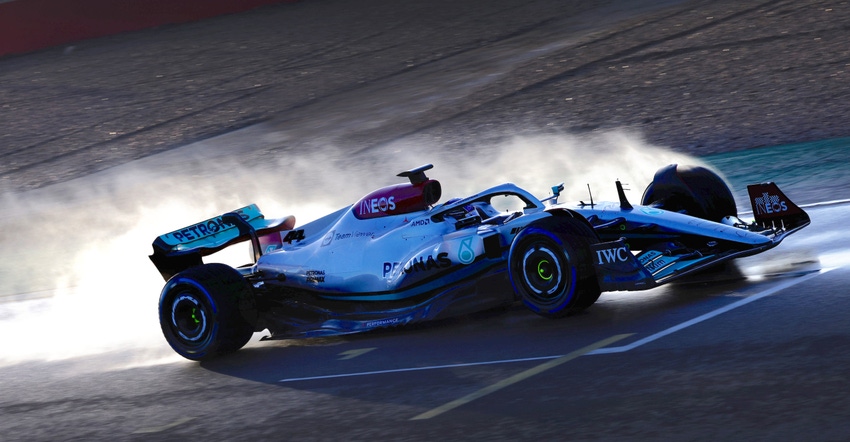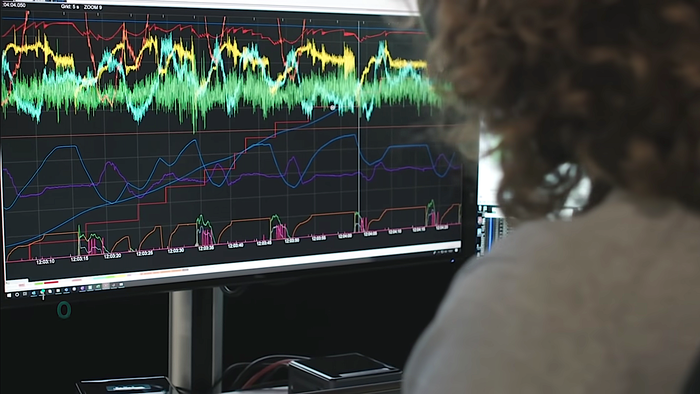Do You Know an Aerodynamicist from an Aerodynamic Engineer?
The Mercedes-AMG Petronas Formula One Team breaks down the different aerodynamic disciplines for us.

As aerodynamics has become crucially important for success in motorsports, responsibilities for aerodynamic development have become increasingly specialized, leading to potential confusion regarding job titles and their associated responsibilities.
The Mercedes-AMG Petronas Formula One Team has provided some clarity thanks to its engineering staffers, who have discussed their jobs through social media.
This is particularly relevant to Formula 1 this year because of the significant rules changes that have scrambled teams’ understanding of their cars’ aerodynamics.
“The aerodynamic changes are so big, they completely influence the packaging of the car and where you want to put certain components,” noted Mercedes-AMG F1 technical director Mike Elliot. “The way the aerodynamic surfaces are defined in the regulations is also completely different: this year you are given a CAD surface and a tolerance to it.”
“That means the designers must think differently and the process of making sure the geometry is legal is much harder,” said Elliot. “In the past, we had lots of little details on the car that added up to quite a big chunk of aerodynamic performance, but now, the component detail isn’t anywhere near as complex. So, the gains you are making are in fundamental shape changes and bigger components than before.”
Consider the difference between the work the team’s aerodynamicist performs when designing these components with that of the aerodynamic engineer. “The aerodynamicist will develop aerodynamic concepts by creating surface models on CAD, meshing them and running them in CFD,” explained aerodynamic design engineer Calum Armstrong in a Twitter thread on the subject. “Then, they do CFD post-processing and analyze the results.”
Another specialization is the aerodynamic surface design engineer, who focuses only on surface model design. “These surface models give us a visual representation of the car's exterior but have zero thickness and zero mass,” said Armstrong. “So the aerodynamicists are providing us with the shape of the bodywork, wings, floor, etc.”
This is when the aerodynamicist performs the important CFD analysis of these surface designs. “Once the aerodynamicist has analyzed the results from CFD, they will decide whether or not to run the concept in the wind tunnel. Any concepts they choose to run in the tunnel, get passed on to the aerodynamic design engineers.”
As an aerodynamic design engineer, now the design is in Armstrong’s hands. “It is the Aerodynamic design engineer's job to take the surface models and effectively turn them into solid models in CAD, which are then used to manufacture various components,” he said. “These components are for the 60 percent scale wind tunnel model of the real F1 car.” While F1 teams have full-scale moving ground plane wind tunnels, recent cost-saving measures restrict them from building and testing models larger than 60 percent scale.
“We decide what materials and what manufacturing processes we should make each part from,” Armstrong continued. “We can use FEA to help us decide which material is required, or to ensure our designs give us the required strength, stiffness, deflection, etc.”
Another specialty is the aerodynamics performance engineer, who works with the final product. “We are responsible for analyzing the aerodynamic performance of the car on track,” explained aerodynamic performance engineer Emma Corfield in a YouTube video posted by the team. “We also then correlate that back to the data in the wind tunnel and in the CFD simulations as well,” connecting to the early work by the other disciplines.
Aerodynamic performance engineers have two very different sets of job responsibilities: one during race weekends and the other back at the office the rest of the time. “My main responsibility is data processing and data quality during the race weekend,” said Corfield. “That helps bring performance to the team, ensuring that the data the race engineers and the other engineers in the Race Support Room (still another discipline!) are looking at is high-quality and they can trust the analysis that they are doing. So, any setup changes they make they know are going to have the desired effect.”

Races put pressure on everyone at the team, not just the drivers who we see in the cockpit, trying to get the most out of the cars. The engineers are desperate to help them. “The race weekends are a very high-pressure situation,” Corfield observes. “You have a limited amount of time during the practice sessions, and also between the practice sessions, to look through all of the data, make sure that you are understanding what the car is doing at that time, and any changes that you make, you want to be confident that they are going to make the car faster and not slower.”
Race weekends are the highest-profile part of the job, but most of engineers’ time is spent back at headquarters. “In between race weekends, I have a slightly different role,” Corfield explained. “I help to put together a manual for all of the aero parts on the car and that’s used by the race engineers and the mechanics during the race weekend.”
There are still many other kinds of engineers who contribute to the race car’s design, construction, and operation, but thanks to Mercedes-AMG F1 for the inside look at the work done by various parts of the aerodynamic team.
About the Author(s)
You May Also Like





